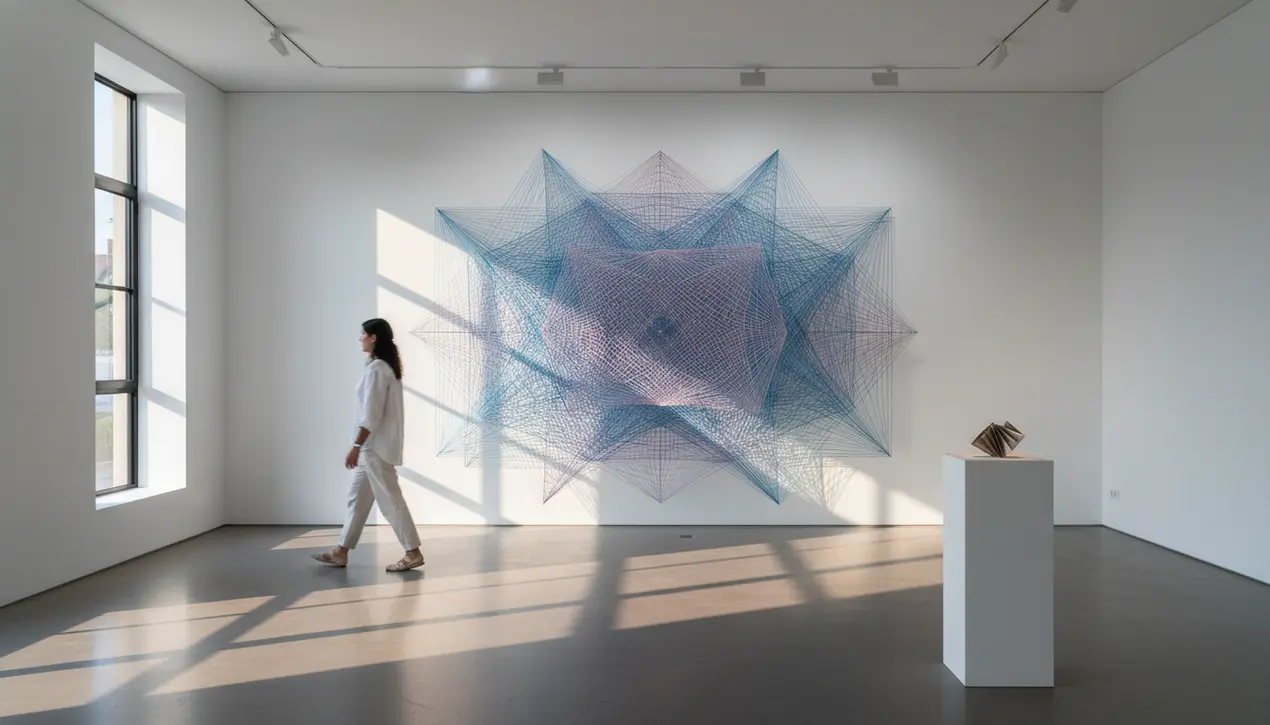
Entertainmenttheatre & artsArt Exhibitions
Artist Rana Begum's Minimalist Explorations of Light and Color.
SO
Sophia King
5 hours ago7 min read1 comments
Stepping into Rana Begum’s solo exhibition, 'Infinite Ground,' at Galerie Christian Lethert feels less like entering a traditional gallery and more like booting up a sublime new creative software where light itself is the primary medium. The London-based artist, a master of what might be called 'human-curated algorithms of perception,' doesn't just display art; she codes immersive experiences using the fundamental building blocks of color, form, and illumination.Her work is the ultimate user interface for the soul, a series of elegant prompts that generate an infinite variety of visual outcomes depending on your position, the time of day, and the ambient atmosphere. Begum’s practice is a fascinating case study in how an artist can take the seemingly rigid framework of Minimalism—often associated with the stark, industrial aesthetics of Donald Judd or the repetitive geometries of Agnes Martin—and inject it with a deeply personal, almost lyrical sensitivity.She transforms cold, hard materials like powder-coated aluminum and industrial mesh into ethereal, breathing entities. A wall-mounted piece, for instance, might consist of multiple layered lattices, each painted in a gradient of sky blues and dusky purples.As you walk past, the work doesn’t just sit there; it performs. The overlapping layers create a moiré effect, a shimmering, dynamic visual rhythm that is computationally complex in its effect but beautifully simple in its construction.It’s the artistic equivalent of a perfectly designed Figma plugin—a tool that expands creative possibility rather than restricting it. This is where Begum diverges from her Minimalist predecessors.While they often sought to remove the artist's hand and emphasize the objecthood of the work, Begum’s hand is present in her meticulous curation of experience. She is less a sculptor and more a UX designer for phenomenological encounters.Her series of 'No. ' works, which often feature arranged, colorful geometric forms, function like a well-organized design system.Each piece is a component that can be understood on its own, but its true power is revealed in relation to the others and to the space it inhabits. She plays with the variables of her visual code—hue, saturation, reflectivity, shadow—to produce an endless stream of unique outputs.The context of the gallery becomes her canvas, and the ever-changing natural light her most crucial collaborator. A piece that appears static and serene at noon might fracture into a dazzling spectrum of color as the afternoon sun slants through a window, projecting calibrated patterns across the floor.This dialogue with light connects her to a different lineage, one that includes the Light and Space artists of California, like James Turrell, but where Turrell constructs entire rooms to control perception, Begum often achieves similar transcendence with a more intimate, architectural scale. Her work demonstrates that you don't need a massive AI model or a virtual reality headset to create a transformative reality; sometimes, all you need is a precisely folded sheet of metal and an understanding of optics.'Infinite Ground' is thus a powerful argument for a new kind of tech-aesthetic, one that is not about digital screens but about enhancing our analog reality. In an age saturated with generative AI art, Begum’s work is a reminder of the profound intelligence and emotional resonance possible in physical, human-made systems. She hasn’t just made Minimalism her own; she has rebooted it for a new generation, proving that the most sophisticated interfaces are often those that help us see the magic already embedded in the world around us.
#Rana Begum
#Minimalism
#Art Exhibition
#Light and Color
#Contemporary Art
#London
#featured
Stay Informed. Act Smarter.
Get weekly highlights, major headlines, and expert insights — then put your knowledge to work in our live prediction markets.
Comments
Loading comments...
© 2025 Outpoll Service LTD. All rights reserved.